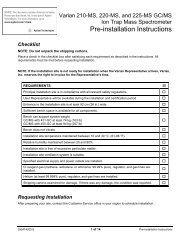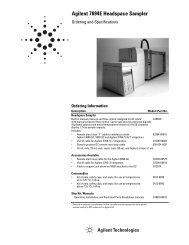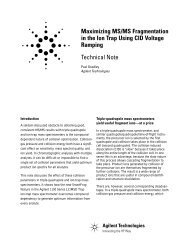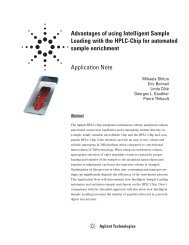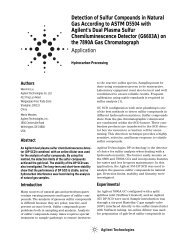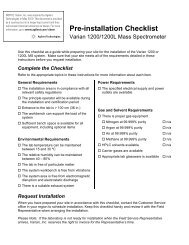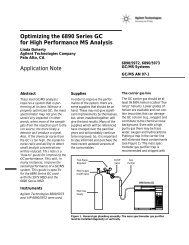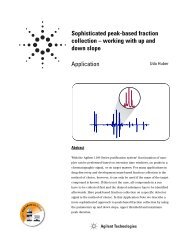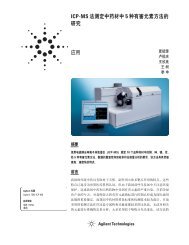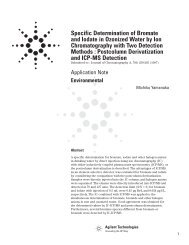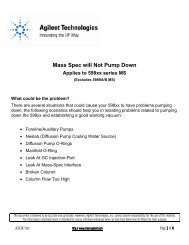Microplate Barcode Labeler User Guide - Agilent Technologies
Microplate Barcode Labeler User Guide - Agilent Technologies
Microplate Barcode Labeler User Guide - Agilent Technologies
You also want an ePaper? Increase the reach of your titles
YUMPU automatically turns print PDFs into web optimized ePapers that Google loves.
Chapter 6: Running a print job<br />
VCode <strong>User</strong> <strong>Guide</strong><br />
129<br />
Related information<br />
For more information about...<br />
See...<br />
Setting up a data source “About data sources” on page 114<br />
Opening an Excel data source<br />
Introduction<br />
This topic describes how to open an Excel 2002 file to use as a data<br />
source for determining the content of printed bar code labels. You do<br />
this when creating a schema.<br />
The use of a data source is optional as you can provide the label content<br />
with counters, constants, and clones instead.<br />
Excel version<br />
!! IMPORTANT !! The file must have been created using<br />
Excel 2002. You cannot create the file with a later version and then<br />
save it as an Excel 2002 format, because the original and converted<br />
formats are not identical.<br />
Before you start<br />
This procedure assumes that you have already created an Excel data<br />
source.<br />
Procedure<br />
To open an Excel spreadsheet as your data source:<br />
1. Make sure that each row of data in the Excel file is a named range by<br />
selecting each named range, in turn, from the list box at the top, left<br />
of the spreadsheet.<br />
The cells that are included in the named range are selected in the<br />
spreadsheet.<br />
2. In PlateTag, click the Schemas tab located at the bottom of the page.<br />
3. In the Data source selection, select Excel 2002.<br />
A list box called Table name appears.



